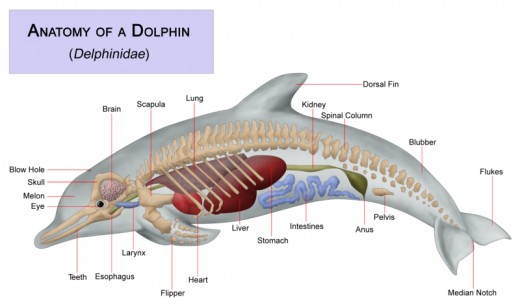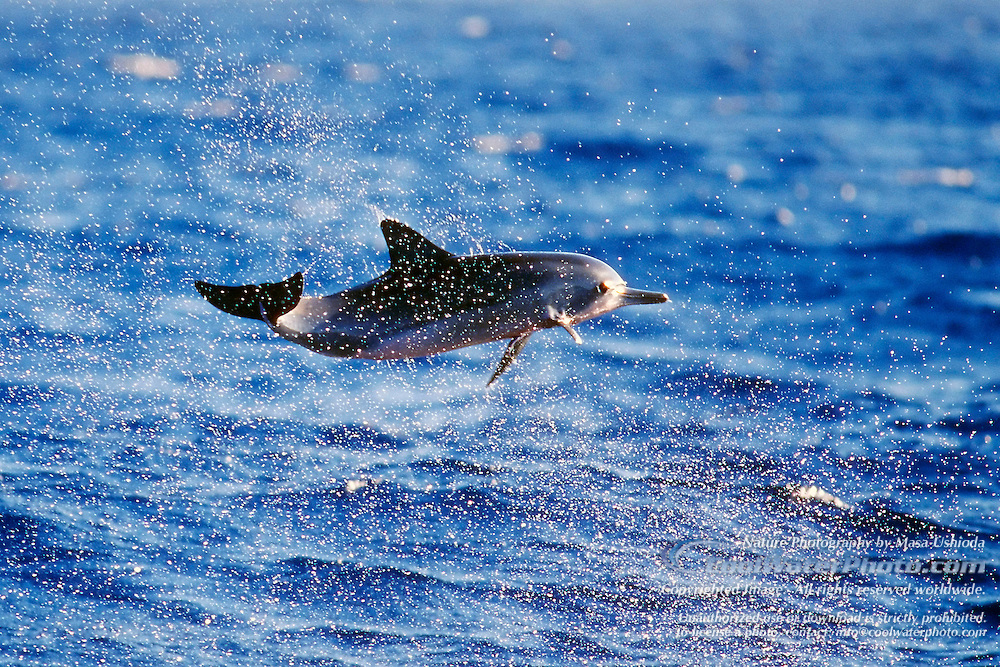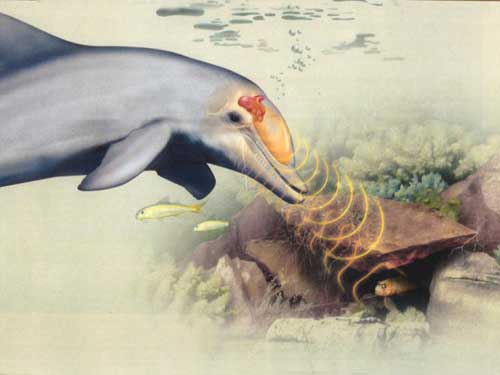
You may have heard about echolocation because of bats, but actually Dolphins and sight-impaired humans use echolocation as well!
Echolocation is using sound waves to detect objects, or in this case food, by making clicking noises and waiting for the sound waves to come back to your senses.
The time it takes to come back shows you how far away the object is and how it is shaped.
Before I get into detail I should go over sound waves first.
(image:
http://www.dolphin-institute.org/resource_guide/kids/tdidream/echolocation.jpg)
SOUND WAVES
Sound waves are caused by vibrations which in turn compress and depress the molecules around them, whether it be in air or water. Sound waves radiate from a source like ripples in a pond (oceanexplorer).
Sound is heard in our ears by the change in pressure of the wave. This is possible because sound waves have frequency, amplitude, and wavelength.
Frequency is just as it sounds. It is how often a wave repeats. Measured in hertz (Hz), frequency sounds high pitched to our ears at higher frequencies. Just imagine a child screaming compared to an adult's. Higher frequency.
Wavelength is how long the wave is. Having a longer wavelength means a lower frequency.
And finally, amplitude is the height of the wave (not including its depression).
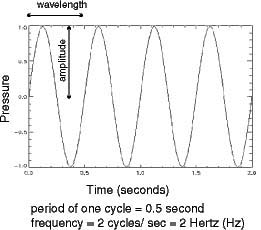 (Chart taken from http://oceanexplorer.noaa.gov/explorations/sound01/background/acoustics/media/sinewave.html)
(Chart taken from http://oceanexplorer.noaa.gov/explorations/sound01/background/acoustics/media/sinewave.html)MORE ECHOLOCATION
Why'd you need to know all that? Well that's how echolocation works. It uses sound waves, vibrations, to detect objects. Specifically, high pitched sounds give echoes with information about: position, size, distance, shape,speed, and even texture of objects.
For example, if an echo is faint, the object is small. If the echo is high pitched, the object is moving towards the dolphin (known as the Doppler effect). As a side note, the Doppler effect is where a sound moving towards you is higher pitched and louder than a sound moving away from you. For example, imagine a police car as its siren is on. It is behind you but you pull over to the side of the road to let it go after someone else. It whips by you and as it moves away the siren is quieter and lower. This is because there are less sound waves per unit time reaching your ear (Amazing Whales).
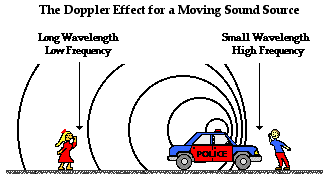 (from http://www.physicsclassroom.com/class/waves/Lesson-3/The-Doppler-Effect)
(from http://www.physicsclassroom.com/class/waves/Lesson-3/The-Doppler-Effect)Here's a pretty good picture of how echolocation works in a dolphin. First a sound is generated by moving air around in the sinuses. Then it bounces the water molecules around and hits an object. The wave is then reflected back in an echo in which the dolphin is estimated to pick up in the fat-filled cavity in the lower jaw, which then makes its way to the ear.
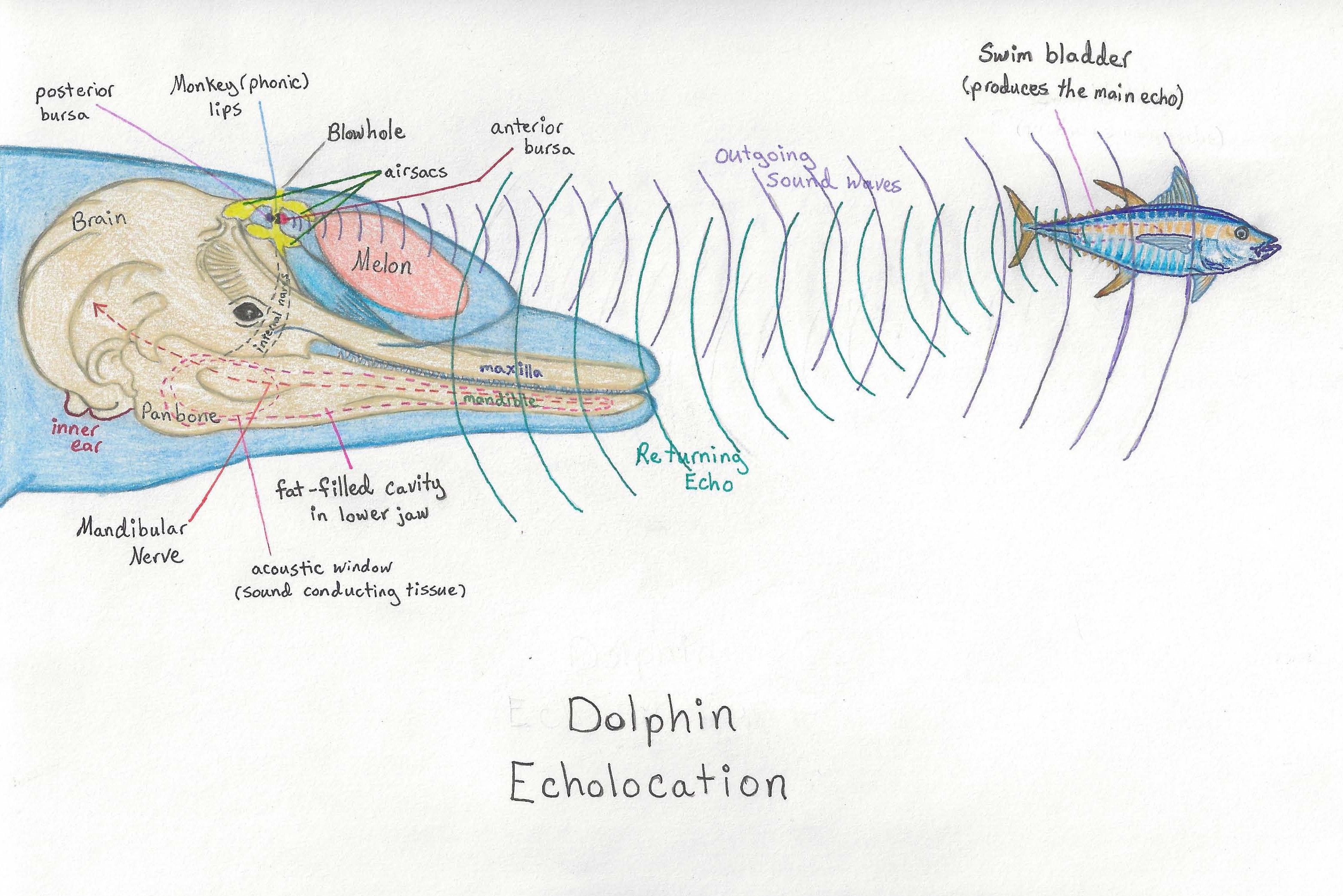
(from http://www.brittonbunch.com/WondersOfCreation/index11.html)
Dolphins use this ability to detect their surroundings, whether it be food, the ocean floor, or each other.
SS
Here are some fun
links here on the bottom. If you want to know more about
dolphins click on the links. (Or if you want to see some
more awesome dolphin photos for that matter.)

